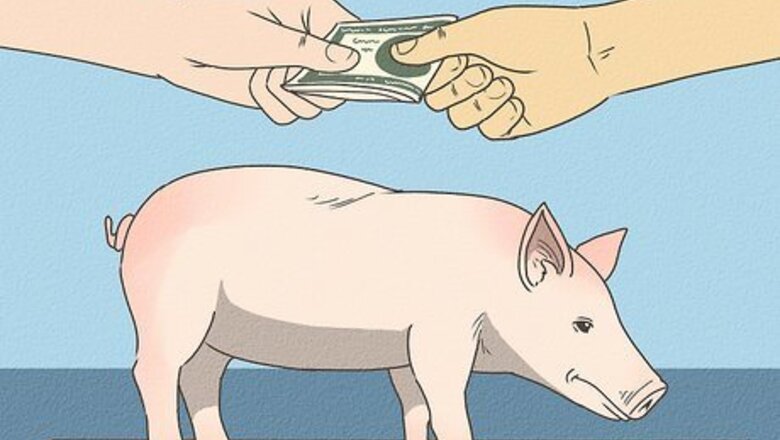
views
Keeping Pigs Happy and Healthy
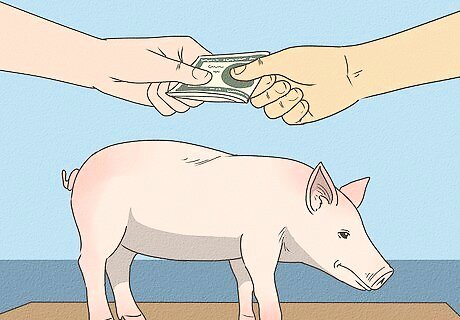
Adopt or purchase a pig from a reputable breeder. A piglet from a pet store or farm might seem cute, but it might also turn into an unhealthy and unsocialized nightmare. Visit the breeder's facility and ask to see the parents of the prospective piglet (the sire and the dam) so you can judge their temperaments and know what to expect with yours. Vietnamese potbellied pigs tend to make good indoor pets, while kunekune pigs are usually good outdoor pets. But regardless of breed, evaluate whether the pig (and, if possible, its parents) seems generally calm and comfortable around humans.
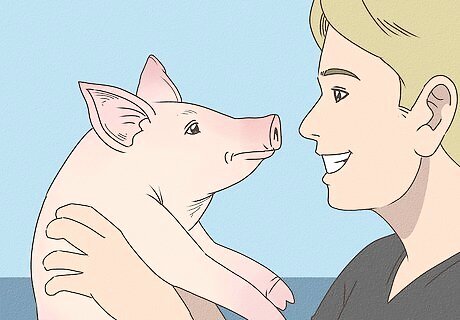
Give a pig lots of your time — or get multiple pigs. Pigs are very social, so you need to be able to spend time interacting with them, or they’ll be moody and disruptive. You also need to be able to assert yourself as the leader, or else you'll end up with a spoiled, pushy, and possibly aggressive pig. Being a leader doesn’t mean being a tyrant, though — be firm and assertive, but caring. Consider getting two or more pigs instead of just one. Few people can constantly spend time with their pets, so giving your pig a few buddies will keep it from getting lonely. Pigs are slower to bond with humans than dogs, for instance. Plan to spend several hours each day during the first several weeks providing for their needs and giving them attention. This will make them more comfortable with you, and establish you as the provider and leader.
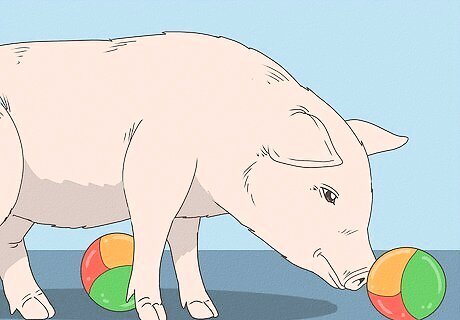
Keep very smart and very curious pigs busy. Pigs’ reputation for intelligence is well-earned. Once they learn how to do something (pull up the carpet, open the fence door, and so on) they won't forget, so you need to stay one step ahead of them. They can also be very sneaky, not unlike a toddler who'll try to manipulate you to get their way. It's important to keep pigs preoccupied and stimulated, or else they can be destructive when bored. Give both indoor and outdoor pigs plenty of toys to push around and play with. Let your pig play with toddler or dog toys, or give them soccer balls or even empty buckets to push around. Hiding treats within boxes, balls, toys, dispensers, or other containers will also keep them busy. Look into more expensive play gyms and jolly balls, or simply give them a sewn-up feed bag or newspaper to play with.

Display loving affection to your pig. Pigs, like most animals, enjoy interaction with their human companion, and it is not unusual to see a pig lying down for a tummy tickle. Talk to your pal, tell them you love them, and praise them for good behavior. As with most pets, positive reinforcement of good behavior works much better than punishment for bad behavior. Pigs who are punished can get moody, distant, and destructive. Reward good behavior immediately with a pat on the head and a “Good piggie!” and/or provide a small treat like plain popcorn or a small apple piece. Ignore the pig (withhold attention) when they display bad behavior.
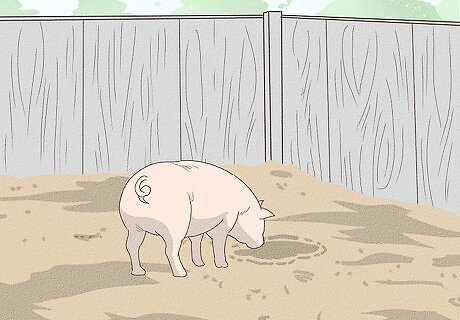
Give them the space and time for regular exercise and rooting. Whether you keep your pig indoors or outdoors, make sure they have the room and the opportunity to move around. Without regular physical activity, pigs can easily become overweight and develop foot problems and other health issues. Rooting is a natural pig instinct — your best option is to give them a section of the yard (roughly 36 square meters or 400 square feet) that they can dig up to their heart’s delight.
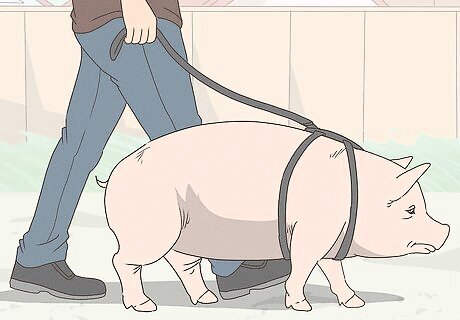
Walk with your pig as part of their exercise routine. Pigs can be leash trained so they can go for walks with you. Use a harness meant for pigs, let the pig drag around the leash for several sessions first, and let the pig generally take the lead on your walks. Allow them to determine how long your walks should be. Most pigs will eventually accept the harness and leash, but some won’t. Give it time, but don’t force the issue if it just isn’t happening. Your pig needs plenty of exercise to prevent constipation. If they won’t tolerate walking on a leash, make sure they stay active by giving them plenty of playtime and safe space to run around in.
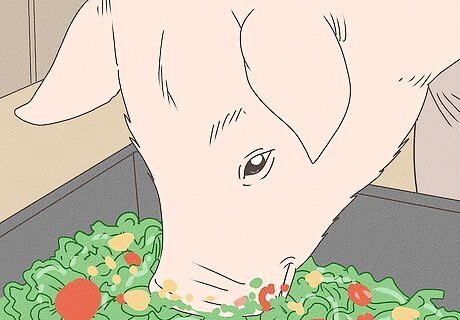
Provide the proper foods and constant fresh water. Pigs are known for eating just about anything, but the healthiest option is to keep them on a fairly steady diet. Give them primarily a commercial pig food that’s low protein, low fat, and high fiber. Supplement their diet with fruits and vegetables like cucumbers, lettuce, squash, carrots, apples, and grapes. To add more fiber to their diet, give them bran or alfalfa hay. Avoid produce like citrus fruits, pineapple, peppers, and onions; also avoid giving a pig salty or fatty foods. The amount of food will vary by the pig’s size and other factors; consult your veterinarian for advice. Pigs should have access to clean, fresh water at all times.

Don’t underestimate the commitment you’re making. Pigs can live for up to twenty years, and they will need lots of food, regular vaccinations, and ongoing hoof and tusk trims, among other expenditures of time and money. For most pig owners, these costs are more than overtaken by the companionship and affection their porcine pals give — but you still need to consider them. Ask questions like: What will my life probably be like in five (or fifteen) years? If I move, will I be able to bring the pig with me? Do I have someone who can care for the pig when I can’t? Do I have room in my budget for ongoing pig care? Care costs often range from roughly $20 - $60 (USD) per month, not including the $100 - $300 often spent per year on veterinary care.
Caring for Indoor Pigs
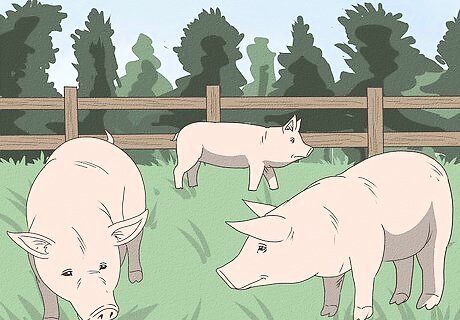
Give your pig a rooting area outside. An indoor pig will probably root around in your house — upturning rugs, knocking things over, etc. — regardless, but providing an outdoor rooting spot will help. Pick out an area of your yard where you don’t mind having a lot of holes and upturned earth. A single pig should have at least 36 square meters (roughly 400 square feet) or outdoor roaming space; the more of which is open to rooting, the better. Keep an eye on your indoor piggie while it’s rooting outside, and make sure it’s contained by a sturdy fence or other enclosure. If you don’t want an object turned over or broken, try placing it on a counter or somewhere off the ground. In particular, you may have to move your waste basket. Try placing it on your kitchen counter or getting a larger, heavier garbage bin that your pig can’t knock over.
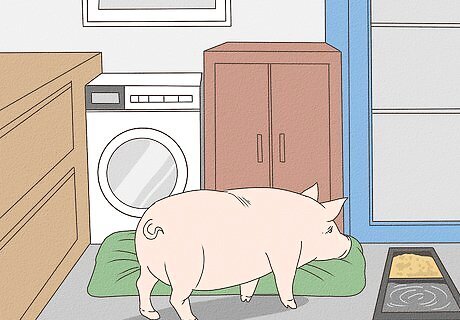
Set up a defined space as their own. Even if you give your pig a relatively free reign around the house, it’s best to establish a smaller room or area as their “home base.” Part of a kitchen, laundry room, or utility room can work, especially if the room has easy-to-clean floors covered by washable rugs. Put their bedding, food and water dishes, and litter box in this area. Ideally, you’ll be able to constrain your pig within this area — by way of doors and/or sturdy child gates — as needed.
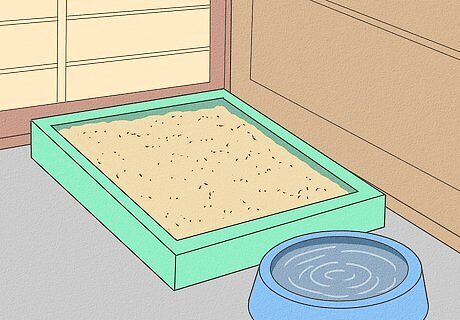
Establish a litter box and potty procedures. Most pigs take to potty training fairly easily, but they often like to have designated options both inside and outside. Indoors, an open tray lined with several layers of newspaper will work well as a litter box. You can place the litter box near the water dish, but keep it further away from the bedding area. It’s best to work on both indoor and outdoor potty training at the same time. And rely on positive reinforcement — reward good behavior instead of punishing accidents. This process will be similar to potty-training a puppy. It will take patience and time, so try to stay positive and keep training sessions upbeat.

Create a cozy sleeping area. For some pigs, a properly-sized doggie bed is a great bedding option. For others, a pile of blankets will do just fine. In fact, a cheap sleeping bag placed on the floor will often make for a comfy sleeping spot. Some pigs may prefer an enclosed sleeping space. You could use a dog crate that’s large enough for your pig to turn around in, or drape blankets over a card table that’s set up over the bedding.

Make sure your home is safe for your friend. If you’ve ever had to toddler-proof your home, you’ll have a pretty good idea of what you need to do to piggy-proof it. Keep any dangerous products or sharp/breakable items off the floor or low shelves, and securely latch low cabinets with child-proof latches. Pigs also struggle on slippery floors, so invest in a lot of inexpensive, easy-to-clean floor rugs. Pigs are food-driven and very smart, which means they’ll quickly learn how to open an unlocked fridge, pantry, or cabinet in search of food. Toddler-proof these areas, too, and make sure they’re securely closed.
Housing Pigs Outdoors
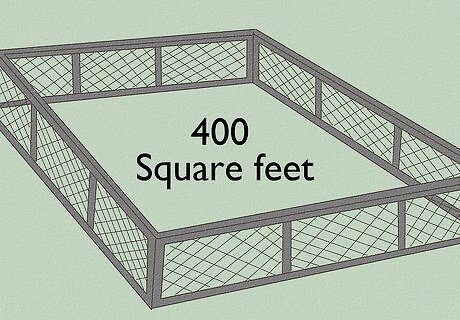
Provide a securely fenced-in area of adequate size. Pigs are smart, crafty, strong, and determined, all of which make them good escape artists. They can dig under, chew through, or knock over fences that aren’t up to snuff, and have been known to figure out how to open a gate latch. Invest in a sturdy fence — for instance, a chain link fence that’s buried into the ground to discourage digging under it. No matter how good the fence is, though, make sure to inspect it regularly. A single pig should have at least 36 square meters (roughly 400 square feet) of roaming space. Add about 4.5 square meters (50 square feet) for each additional pig.

Let them wallow in the mud. Pigs aren’t dirty animals per se, but they do indeed love to roll around in the mud from time to time. In fact, since pigs don’t sweat, they need to wallow to ensure the proper regulation of body temperature, particularly in hot weather. The wallow can be very simple — a tilled up section of the yard that you hose down a few times per day — or can be sectioned off with wood of other edging materials. You can fill a baby pool with water to let your pig cool off and splash around in. Depending on how hot it is, they may even want to use both. Indoor pigs will also enjoy a good wallow every so often; just hose them down when they’re done. For the best results, especially in hot weather, locate the wallow in a shady area.
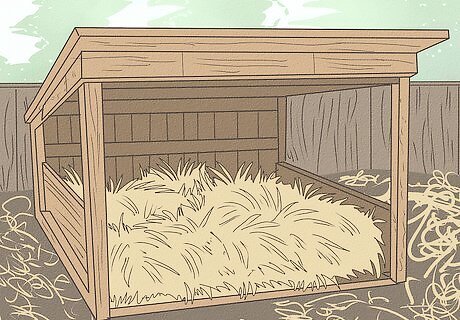
Provide a protective shelter that maintains a good temperature range. Make sure outdoor pigs have their own dry and sheltered sleeping spot. It needs to be at least partly covered for shading and to stay dry, and should be ventilated but not too breezy. Put down some “flooring” as well — piglets will burrow into hay, while adult pigs are usually happy with wood shavings (not sawdust). Shelters can be purchased or built (look for instructions online); they should be at least 6 feet (1.8 m) by 6 feet (1.8 m) in size for each adult pig sheltered inside. Pigs thrive in temperatures between 12 and 26 degrees Celsius (54-79 degrees F); provide supplemental heating (via commercial pet enclosure heaters) or even cooling (via inaccessible fans) if necessary.




















Comments
0 comment